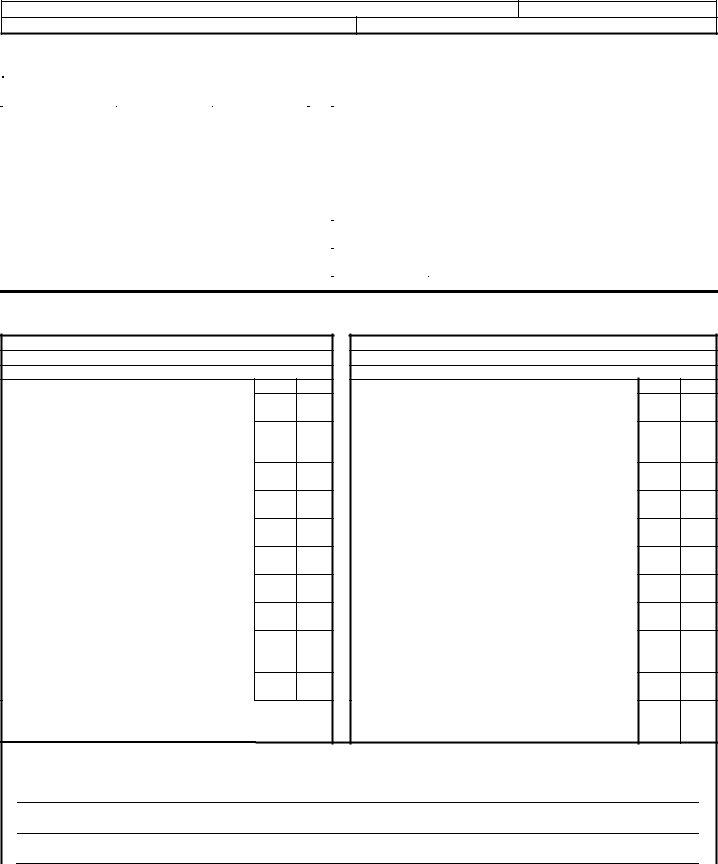Understanding the complexities and nuances of the Di Se F55 form is pivotal for professionals involved in the educational assessment of students, particularly those with severe handicaps. This form serves as a critical tool for recording the results of hearing and vision screenings—vital components in the comprehensive evaluation of a student's sensory capabilities. Revised in August 1992, it comprises two main sections, each meticulously designed to capture the nuances of hearing and vision screening outcomes. The first part focuses on the use of specific instruments to determine the pass or fail status of a student's hearing and vision across various parameters, including far vision and near vision, with considerations for screenings conducted with or without glasses. If initial screenings prove challenging, or if a student cannot respond to traditional screening methods, the form's second part offers a structured approach for a qualitative assessment. This assessment explores the student's response to auditory and visual stimuli in everyday contexts, thereby providing an alternative lens through which educators and specialists can gauge sensory responses. Whether it's noting the student's reaction to sounds, such as a ringing bell or their name being called, or observing their interaction with objects and light, the Di Se F55 form ensures a thorough and nuanced approach to understanding the unique needs of each student, paving the way for tailored educational programming.
| Question | Answer |
|---|---|
| Form Name | Di Se F55 Form |
| Form Length | 1 pages |
| Fillable? | No |
| Fillable fields | 0 |
| Avg. time to fill out | 15 sec |
| Other names | vision screening forms for school, di se f55, unaided, DI-SE-F55 |

HEARING/VISION SCREENING RESULTS |
Attachment I |
|
Student Name:
School:
PART I
Revised, August 1992
Age:
District:
A. HEARING SCREENING
Instrument:
|
|
1st Screening |
2nd Screening |
|
PASS |
|
|
|
FAIL |
|
|
|
EXAMINER |
|
|
|
DATE |
|
|
B.VISION SCREENING Instrument:
|
|
|
1st Screening |
2nd Screening |
||||
|
|
|
YES |
|
|
YES |
|
|
|
Screened wearing glasses? |
NO |
|
|
NO |
|
|
|
|
Both Eyes |
|
|
|
|
|
|
|
|
Right Eye – Far Vision |
|
|
|
|
|
|
|
|
Left Eye – Far Vision |
|
|
|
|
|
|
|
|
|
|
PASS |
|
PASS |
|
||
|
Near Vision |
|
FAIL |
|
FAIL |
|
||
|
FIRST |
EXAMINER |
|
|
|
|
|
|
|
SCREENING |
DATE |
|
|
|
|
|
|
|
SECOND |
EXAMINER |
|
|
|
|
|
|
|
SCREENING |
DATE |
|
|
|
|
|
|
|
|
|
|
|
|
|
|
|
PART II
If an attempt is made to condition a severely handicapped child for hearing/vision screening and no response can be obtained, then a quantitative description of the child’s hearing/vision must be completed by an individual who works with the child.
A.HEARING EXAMINER: DATE:
YES NO
1.Does subject respond to noise, i.e. ringing bell, rattle, etc.?
2.Does subject respond to name when called?
3.Does subject interact verbally or with gestures?
4.Can subject identify body part on verbal command?
5.Does subject respond to simple verbal commands?
6.Can subject point to person or objects when asked?
7.Is imitation of speech present?
8.Does subject’s eyes and/or head turn toward a voice?
9.Does subject react to (not necessarily stop) an activity when he hears “No! No!”?
10.Does subject attend to songs sung to him?
B.VISION EXAMINER: DATE:
YES NO
1.Does subject follow an object with eyes?
2.When using a pencil, crayon, paintbrush, etc., does subject follow markings with his eyes?
3.Does subject pick up objects from table or floor?
4.Does subject reach for objects when handed to him?
5.Does subject grasp objects unaided or without direction from teacher?
6.Does subject look at an object when placed before him?
7.Does subject look at pictures in a book?
8.Do eyes and head turn toward a light that is introduced?
9.Does subject watch own hand movements?
10.Does subject look at self in mirror?
11.Does subject use a visual searching technique when objects are placed out of sight?
Describe additional behaviors in hearing/vision that should be considered in assessment and educational programming: